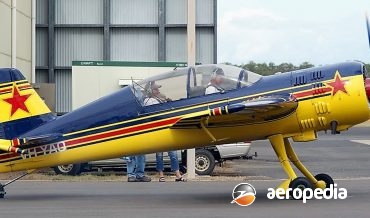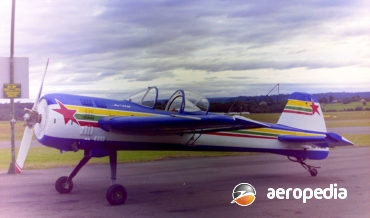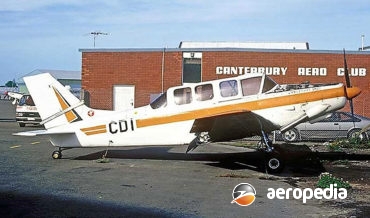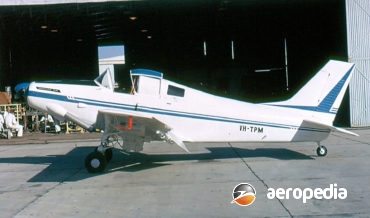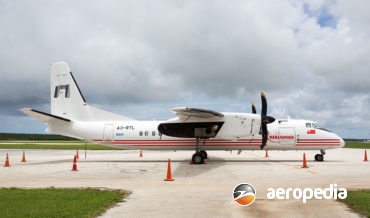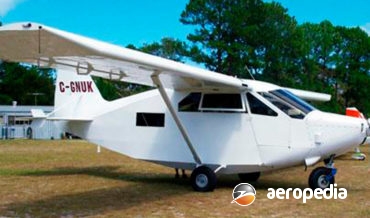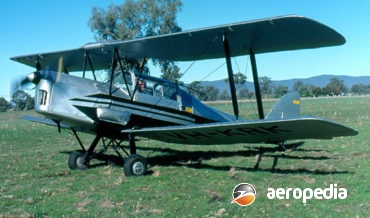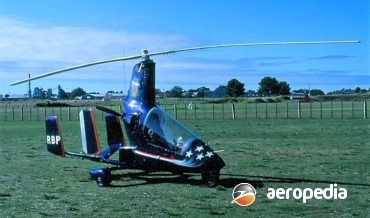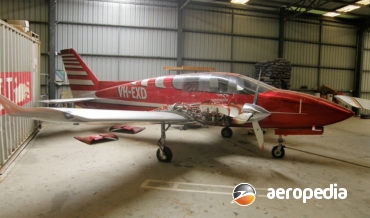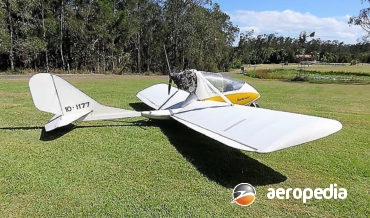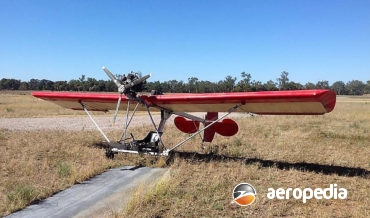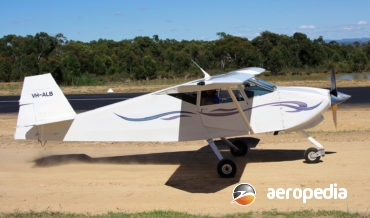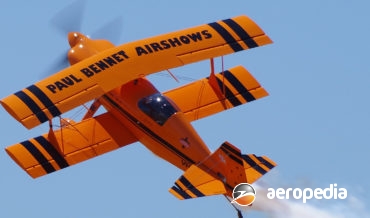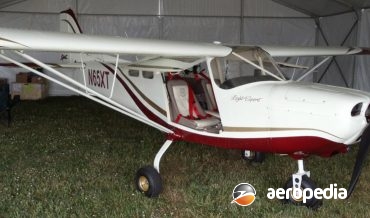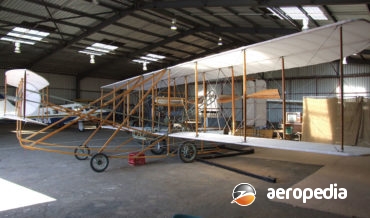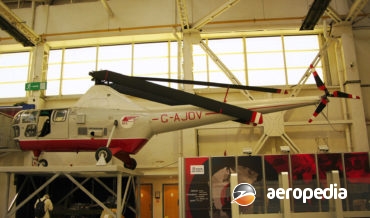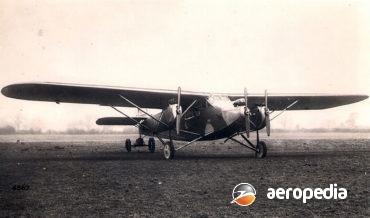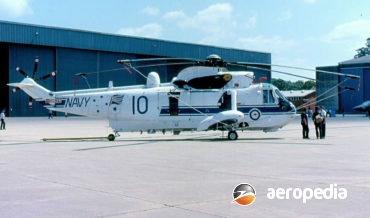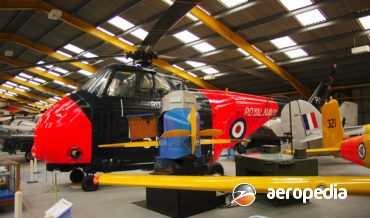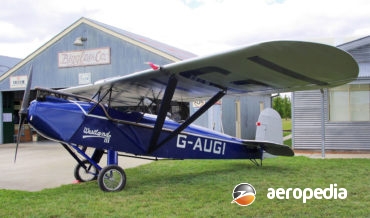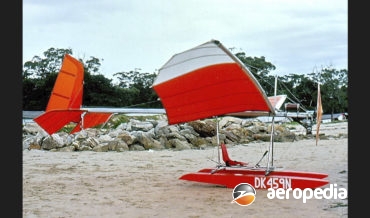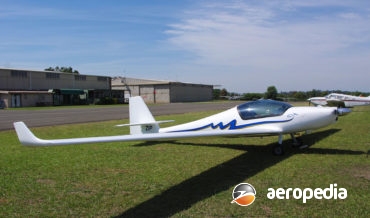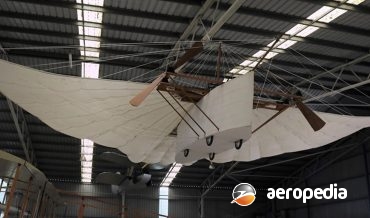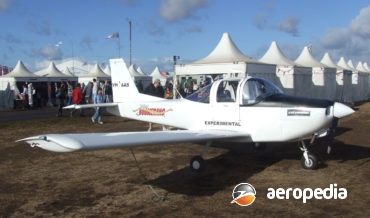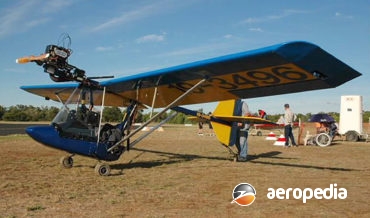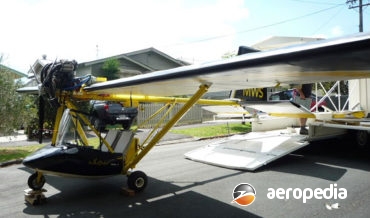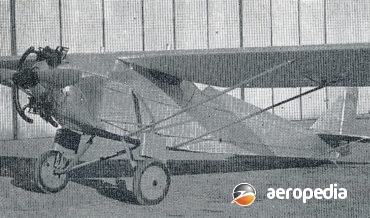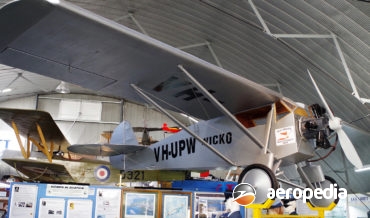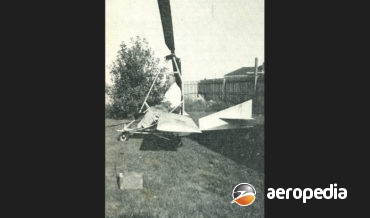David C. Eyre
Since the availability of aircraft from the Eastern Block in the late 1970s some hundreds of Soviet designed aircraft have become available to western pilots.
David C. Eyre
- May 8, 2019
The Yak 54 series of fully aerobatic light aircraft was announced in 1992, the prototype flying for the first time on 23 December 1993.
David C. Eyre
- May 8, 2019
The Yak-55 series was an all-metal cantilever monoplane designed for high performance aerobatics and was first seen at Spitzberg, Austria in 1982 at the World Aerobatic Championships when flown by Yakovlev Bureau test pilot Michael Molchaniuk.
David C. Eyre
- May 8, 2019
The one and only example of the Yeoman Hanes 250 aircraft was built initially at Bankstown by Yeoman Aviation as a single-seat agricultural monoplane, a Model 250R Cropmaster, and was registered as VH-DEQ (c/n 110) on 28 January 1964 to the manufacturers for testing.
David C. Eyre
- May 8, 2019
Yeoman Aviation Pty Ltd of Bankstown, NSW, was formed in 1958 as an associate company of Kingsford Smith Aviation Services Pty Ltd to specialise in the development and servicing of agricultural aircraft.
David C. Eyre
- May 8, 2019
The MA-60 is a turboprop powered 52-seat commercial transport designed and built by the China Aviation Industry Corp and is a stretched and re-designed variant of the Y7-200A, which itself was produced in China as a development of the Antonov An-24 transport which had been designed to operate in rugged
David C. Eyre
- May 8, 2019
The Wilson Explorer II, also known as the Private Explorer II, was designed by Dean Wilson and was a development of the twin-engine Global Explorer which was designed and built for French explorer Hubert de Chevigny.
David C. Eyre
- May 8, 2019
The Jackaroo was developed by the Wiltshire School of Flying Limited at Thruxton Aerodrome, Andover, Hants in the United Kingdom in the early 1960s.
David C. Eyre
- May 8, 2019
The Windryder is a single-seat autogyro produced by Windryder Engineering Inc of Broomfield, Colorado and the first of two prototypes, known as the Hurricane, flew for the first time in August 1985.
David C. Eyre
- May 8, 2019
The Derringer was designed by George Wing and built by his company, Wing Aircraft and Hi Shear in the early 1960s at Torrance, California as a two-seat, twin-engine sporting and training monoplane with a retractable undercarriage.
David C. Eyre
- May 8, 2019
The Grasshopper was designed and built by Colin Winton of Winton Aircraft of Manly Vale, NSW in the 1970s and he and his Company produced 30 examples.
David C. Eyre
- May 8, 2019
The Sportsman was designed and developed by Colin Winton of Winton Aircraft of Coomera, QLD as a cheap, good handling light single-seat sporting aircraft powered by one of the popular at the time Volkswagen engine conversions.
David C. Eyre
- May 8, 2019
In 1987 Australian light aircraft Pilot, designer and builder, Scott Winton, announced he would built an all-composite light aircraft which was essentially a flying wing with a span of 6.7 m (22 ft) and a weight of 99.7 kg (220 lb), a wing area of 10 m² (107.6 sq ft)
David C. Eyre
- May 8, 2019
The Jackaroo was one of many designs produced by the late Colin Winton and produced by Winton Aircraft in Queensland and is a single-seat high-wing open-cockpit aircraft, being first made available to pilots in about 1980.
David C. Eyre
- May 8, 2019
The Jillaroo was one of a series of ultra-light aircraft designed by the late Colin Winton, others including the Brumby, Jackaroo, Sportsman and Grasshopper and they had a variety of engines including examples from the Rotax series, Hirth, Zenoah and Fuji Robin.
David C. Eyre
- May 8, 2019
In 1916 Mr C W Wittber built a biplane which was similar in appearance to a Farman, known as the Wittber Biplane or Wittber Boxkite. The engine fitted, a three-cylinder Anzani, had previously been fitted to a Bleriot XI imported by Mr F J Jones of Adelaide.
David C. Eyre
- May 8, 2019
Steve Wittman, a well-known American racing pilot since the 1920s, designed a number of racing aircraft and, due to the popularity of his designs, several designs were made available for amateur construction.
David C. Eyre
- May 8, 2019
The Wolfpitts PRO is a highly refined variant of the Pitts S1S series of single-seat high-performance aerobatic biplane.
David C. Eyre
- May 8, 2019
The spirit was designed by Mr.Max Tedesco and is built by a joint American and Colombian company, the World Aircraft Company, for the light sport aircraft market and was shown for the first time to the public at AirVenture at Oshkosh in 2011.
David C. Eyre
- May 8, 2019
The Wren 460 was a short take-off and landing conversion of the Cessna 182 using an ultra-low–speed control system devised by James L Robertson.
David C. Eyre
- May 8, 2019
On 17 December 1903 the Wright brothers, Wilbur and Orville, achieved the first successful, powered, sustained and more-or-less controlled flights in a heavier than air machine in the midst of a gusty, wintry, gale on the Kitty Hawk promontory in North Carolina between the Albermarle Sound and the Atlantic Ocean.
David C. Eyre
- May 8, 2019
In early 2017 Morgan Aeroworks of Taree, NSW stopped production of its range of aircraft, comprising the Sierra and Cougar light sport aircraft, the owner of the Company, Gary Morgan, moving back to New Zealand.
David C. Eyre
- May 8, 2019
In 1947 Westland Aircraft Co obtained a licence to build the Sikorsky S-51 in the United Kingdom for the British military services, this being a four-seat general purpose helicopter in service with the USAAF.
David C. Eyre
- May 8, 2019
The Westland IV was designed and built by the Westland Aircraft Works at its Yeovil facility in Somerset in 1928, being an attractive small, high wing, taxi or feeder line aircraft constructed of wood, with fabric covering and fitted with tail parts from a Westland Wapiti.
David C. Eyre
- May 8, 2019
The Westland Sea King was derived from the Sikorsky S-61 series of helicopters, which had been designed to meet the requirements of the US Navy for an anti-submarine search-and-strike helicopter.
David C. Eyre
- May 8, 2019
The Whirlwind was a development of the Sikorsky S-55, the prototype HAR-1 (XA862) flying for the first time on 21 August 1953 powered by a 448-kw (600-hp) Pratt & Whitney R-1340-40 radial engine and was later delivered to the Royal Navy.
David C. Eyre
- May 8, 2019
The Westland Widgeon, a parasol-wing aircraft with fabric covering and a spruce girder fuselage, was built for the 1924 Lympne Trials in the UK.
David C. Eyre
- May 8, 2019
Ronald Wheeler was one of the people who foresaw the coming boom in ultralight aircraft in the 1970s and was a pioneer in this area.
David C. Eyre
- May 8, 2019
The Whisper is a self-launched motor-glider produced by Whisper Aircraft of Port Elizabeth in South Africa for the World market.
David C. Eyre
- May 8, 2019
Gustave Whitehead as he was known in the United States (born Gustav Albin Weisskopf on 1 January 1874 in Leutershausen in Bavaria) was born and raised in Germany and was trained in Augsburg as an engine builder.
David C. Eyre
- May 8, 2019
The Boomerang was designed by Mr William “Bill” Whitney as a two-seat, all-metal, light training monoplane in 2003/04 to replace the many Cessna 152s and Piper Tomahawk in use around Australia with various training organisations.
David C. Eyre
- May 8, 2019
Designed as a simple to build and operate ultra-light aircraft, the Magpie was designed by Mr W “Bill” Whitney and was built and flown by Messrs Clyde Howard and Arnold Trapp.
David C. Eyre
- May 8, 2019
The Whitney scamp is a light sporting biplane with open cockpits designed by Mr W ‘Bill” Whitney in Queensland for amateur construction by Mr. Hargrave.
David C. Eyre
- May 8, 2019
The Fatboy is one of a series of ultra-light aircraft designed in the United Kingdom by Michael Whittaker, this being the first two seat side-by-side design produced by his company, with more than 200 sets of plans being sold by 2010.
David C. Eyre
- May 8, 2019
After construction of the Wikner Wicko, Geoffrey Neville Wikner designed and his company, Australian Aircraft Co at Archerfield, QLD, built a high-wing monoplane powered by the same 45-kw (60-hp) Anzani radial engine that had been fitted to the earlier aircraft.
David C. Eyre
- May 8, 2019
The Wicko Wizard was a wire-braced low-wing monoplane developed from the Lion powered by a four-cylinder 60-kw (80-hp) ADC Cirrus II engine (from Avro Avian VH-UFY).
David C. Eyre
- May 8, 2019
In 1929 Geoffrey Wikner purchased a second-hand but badly damaged Farman Sport biplane and rebuilt it, at that time registering a company as the Aircraft of Australia Aviation Co, and set about barnstorming in Queensland
David C. Eyre
- May 8, 2019
The Wikopter was an experimental helicopter designed and built by Geoffrey Neville Wikner (1904 - 1990) at Trafalgar Heights, Nelson Bay, NSW.
David C. Eyre
- May 8, 2019
In the early 1960s Mr Leonard Williams designed and constructed a gyrocopter known by his friends as the Lennycopter.
David C. Eyre
- May 8, 2019
Mr Geoffrey Williams, before his death in May 2002, designed five ultra-light (microlight aircraft in New Zealand) of his own design and built four. He was the son of a former World War II Avro Lancaster pilot and lived in the Dunedin area. His grandfather was a carpenter and Geoff
David C. Eyre
- May 8, 2019
Recent Comments
Archives
Categories
- No categories
Categories
- No categories
Latest Posts
Newsletter


